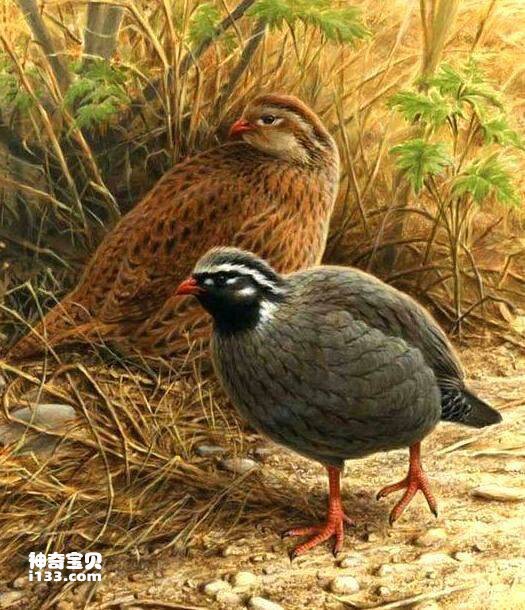Ophrysia superciliosa
IUCN
LCBasic Information
Scientific classification
- name:Ophrysia superciliosa
- Scientific Name:Ophrysia superciliosa,Himalayan Quail
- Outline:Landfowl
- Family:Chickeniformes P.family H.Quail
Vital signs
- length:About 25 cm
- Weight:No textual research information is available
- lifetime:No textual research information is available
Feature
The tail feathers are long, longer than other quails
Distribution and Habitat
It is found in India and Nepal. It has only been seen in two locations west of the Himalayas in Uttarakhand, northwestern India.
The habitat ranges from 1650-2400 m above sea level. It lives on tall grass, coppice and steep mountain sides (especially in the direction of the south or east), and inhabits steep mountain sides with long grass.
Appearance
The Himalayan quail is 25 cm long. Male quails are black-gray with white markings, dull stripes, and white forehead and eyebrows. There are white spots before and after the eyes. The female quail is brown with dark markings and grey eyebrows. Their tail feathers are long, longer than those of other quails. The feathers on the tail are much longer than the wings. The feathers on his forehead are hard. The beak and feet are red.
The beak is thick and short, and the maxilla protrudes below; The legs are short and usually have one or more distances in the male bird. The claws were short, blunt, and strong enough to dig food from the ground. The wings are short and round. The flight is fast and powerful, but it cannot fly for long distances. Under normal circumstances, walking on the ground mostly, except when in danger will fly.
Details
The Himalayan Quail (Ophrysia superciliosa) is a medium sized pheasant bird with no subspecies.

Himalayan quails were described in 1846 by John Edward Gray, based on live specimens taken by the Earl of Derby at Knowsley, who was suspicious of their discovery in India. They were not officially found in the wild until 1865, when a pair of Himalayan quails were shot in a cave at 1,800 meters above sea level behind Masuri. Two years later, five specimens were collected in Jerepani. In 1876, one specimen was found at an altitude of 2100 m near Nibur. The Himalayan quail is a migratory bird that arrives in winter. They have been observed living together in groups of 6-10 in Masuri, roosting in tall grass and jungle, eating grass seeds, making them difficult to scare away, and emitting a shrill whistle when startled. They seem to have arrived in November, but stayed until June at the latest, after which they disappeared.
Himalayan quails are similar to Assamese quails in that they tend to be seen at dawn or dusk in groups of about 5-6 individuals. Walking on two feet is more than flying. Their soft plumage shows that they are adapted to live in cold regions. They may have migrated north to the higher mountains in the summer, but from their shape and wings, they would not have been able to fly very long distances. Food consists mainly of seeds. Grass seeds, in particular, also eat insects.
Little reproductive information is known about Himalayan quails. It breeds in September and was caught in June as a male quail moulting.
Field surveys in the mid-19th century indicated that Himalayan quails were still relatively common, but were reported to be rare in the late 19th century. This species was last seen in India more than 70 years ago (1946), suggesting that hunting during colonial times played a significant role in its population decline. By the 19th century, sightings were rare, with only about 50 left in the wild. Although it has not been seen for years, there is still hope that a small number of species can survive in the middle and lower Himalayas.
From the records, the number of Himalayan quails is unlikely to be very large, and those habitats have been so altered that no trace of them can be seen. Tourism is an important source of local economy, so it's hard to argue that they can evade birdwatchers. But there is no evidence that these habitats are inadequate for them. From the distribution and habitat requirements of the Himalayan quail, it is possible that they are living in Nepal. Since most people in Nepal are vegetarians for religious reasons, and habitat destruction is not as severe as in India, western Nepal is a likely place for them to live. However, as this is an area of frequent conflict between the Communist Party of Nepal (Maoist) and the Nepalese government, no research has been attempted to find Himalayan quails.
Listed on the International Union for Conservation of Nature (IUCN) 2016 Red List of Threatened Species ver 3.1 - Critically Endangered (CR).
Protect wild animals and eliminate wild meat.
Maintaining ecological balance is everyone's responsibility!








